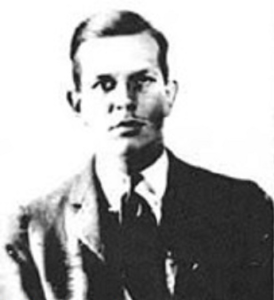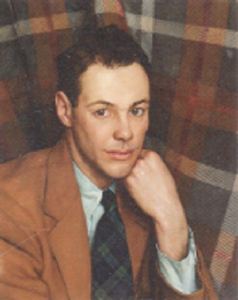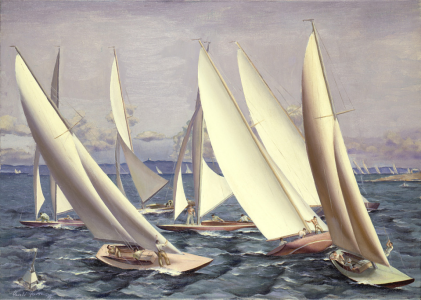

Biography
Gerald Sargent Foster was born in Westfield, NJ in 1900. He attended Princeton University, graduating in 1923 with a Bachelor of Science degree. After Princeton he was a student at the National Academy of Design in New York, where his teachers included Charles Courtney Curran, Hugh Bolton Jones and Irving Ramsey Wiles. Curran was an Impressionist painter and leading figure in the Cragsmoor (NY) Artists Colony. Jones was a landscape painter and a member of the Hudson River School. And Wiles was a portrait artist in the grand manner.
Following his time at the National Academy of Design, Foster was a student at the American Academy in Rome. He also studied at the Art Students League in New York, and he was a recipient of a Fellowship from the Louis Comfort Tiffany Foundation. In New York Foster's work was shown at the American Artists Professional League and later at the Macbeth Gallery. The Art Institute of Chicago included Foster's paintings in showing in 1928, 1930 and 1931.
In 1932 Foster participated in the Art Competition at the Summer Olympics. The Macbeth Gallery included him in their exhibit "Paintings by a Group of Younger Artists" in 1932, followed by exhibits at the Whitney Museum of Modern Art in 1933 and 1936. The Macbeth Gallery showed his work with that of others members of the Louis Comfort Tiffany Foundation in 1933-1934.
Foster's first Post Office mural was "Molly Pitcher at the Battle of Monmouth" for Freehold, NY in 1935. He participated in the Chicago World's Fair in 1936 and obtained a commission for the Cranford, NJ Post Office with his massive (70 foot long) mural "The Battle of Cranford during the American Revolution." Foster married Eleanor Gibson in 1938. The same year he received a commission to create three murals for the Poughkeepsie, NY Post Office: "Indian Resting Spot - 1690," "Ratification of the Constitution - 1788," and "Scene in Poughkeepsie - 1850." He completed another mural "Revolutionary Engagement at Bridge in Millburn–1780" for the Millburn Post Office in 1940, but it has not survived.
In 1940 the Macbeth Gallery held a solo exhibit for Foster. He illustrated a children's book on John Paul Jones, "I Have Just Begun to Fight," in 1942. And in 1945 he painted a mural for the newly-formed Bulova School of Watchmaking, which had been set up to train war veterans. Foster continued painting into his 80s, including some exotic landscapes. He died in Orangeburg, SC in 1987.


Critical Analysis
There are two or three distinct threads in Foster's artistic career. One of his passions was sailing, and he painted a number of pictures depicting racing yachts. Some critics have denigrated this work, suggesting that people should have had their minds on higher things during the Depression, but Foster's paintings of the sea are marvelous abstractions of the boating scene. He stripped his boats of some of their accessories and presenting them and especially their sails as wonderful swooping abstract forms.
The second genre in which Foster excelled was that of historical painting. His meticulous research underlay each finished work. One can trace his progress from the simple portrayal of Molly Pitcher in the Freehold, NY Post Office to the complex multiple portraits in Poughkeepsie's "Ratification of the Constitution - 1788." Foster's research for this painting was aided by none less than Franklin D. Roosevelt himself, along with Roosevelt's friend at the Dutchess County Historical Society, Helen Reynolds.
Later work of Foster's includes examples of landscapes - seascapes and one entitled "Arctic Regions." All of Foster's work shows a great attention to detail and an interest in realistic portrayals.
Murals
- Cranford, New Jersey - Post Office: The Battle of Cranford
- Manalapan, New Jersey - Monmouth County Public Library: Molly Pitcher at the Battle of Monmouth
- Poughkeepsie, New York - Post Office: Indian Resting Spot - 1690
- Poughkeepsie, New York - Post Office: Ratification of the Constitution - 1788
- Poughkeepsie, New York - Post Office: Scene in Poughkeepsie - 1850
References
- Biography of Gerald Sargent Foster (1900-1987) (Artprice).
- Gerald Foster (Hudson River Valley Institute).
- Gerald Foster (Olympia).
- Gerald Sargent Foster (Find a Grave).
- Gerald Sargent Foster (Leland Little).
- Gerald Sargent Foster (artist-info).
- admin, In 2009 Celebrating 75 Years of WPA Art, Roosevelt Island Historical Society August 5 (2020). 1934: A New Deal for Artists.
- Poughkeepsie Post Office.National Register of Historic Places Nomination (1986). Agree to legal disclaimer at the Cultural Resource Information System, proceed as guest, then use the URL or link given above. The text provides an extensive history of Poughkeepsie and its Post Office, with a brief mention of the five murals in the Post Office lobby and the three artists who painted them. No dimensions are given.
- Keith Muchowski, Searching for an Historian: Researching the Poughkeepsie Post Office Mural of the NY State Ratification of the U.S. Constitution (July 1788) painted by Gerald Foster, The Strawfoot March 15 (2020).